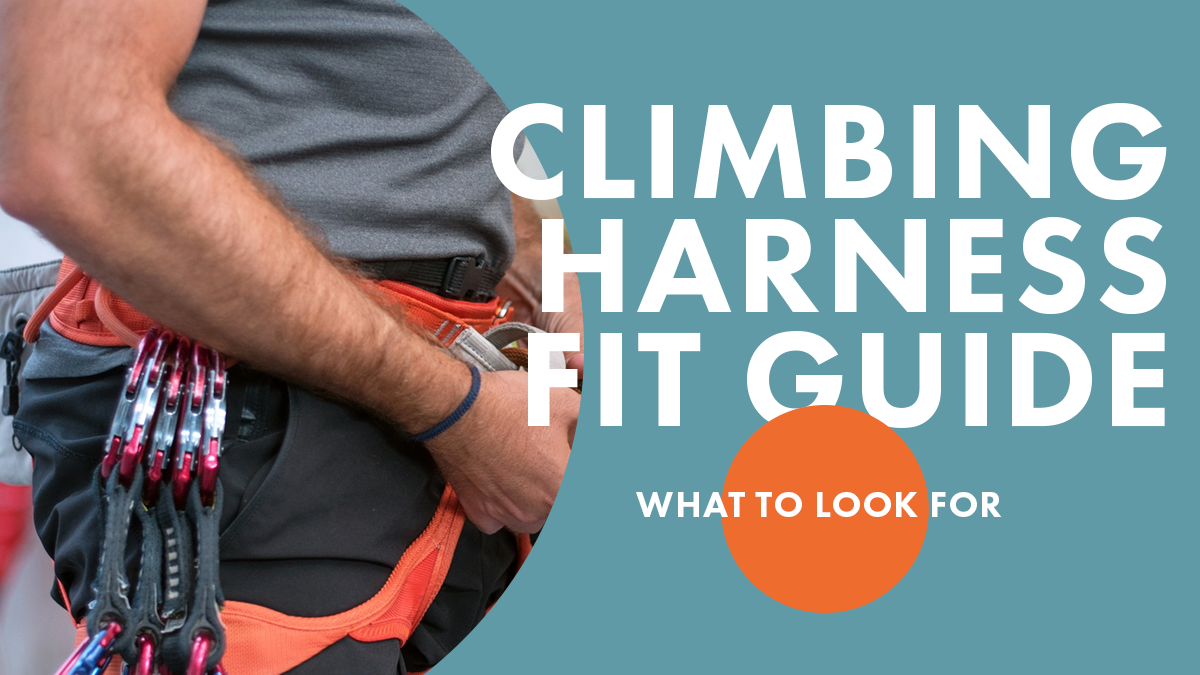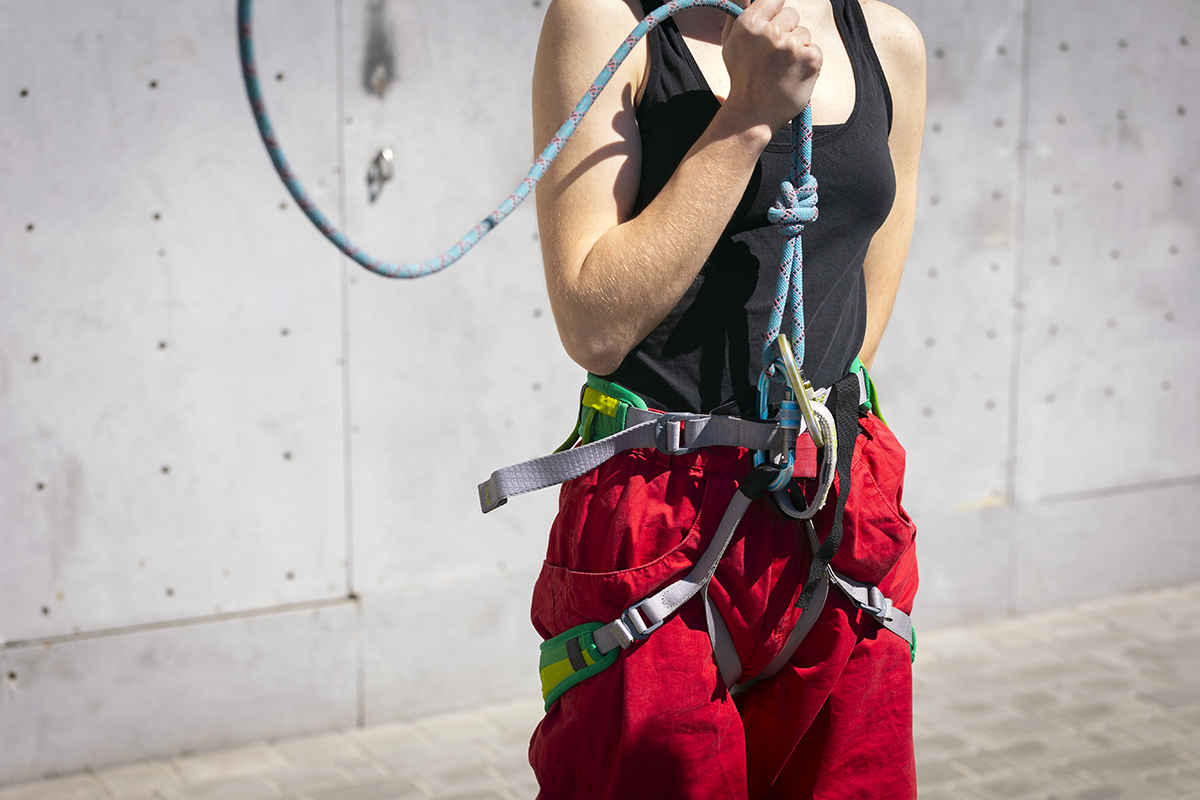A climbing harness is one of the most essential pieces of gear needed for rope climbing. You can do without the shoes or the chalk, but when it really comes down to it, you need a harness. (We’re excluding rope harnesses from this equation for obvious reasons.)
But how do you know what size harness to look for? Do you go by your pant size? What should a properly fitting harness feel like? Are there really different kinds?
Follow along to understand how to look for the proper harness, what to expect when choosing a climbing harness, and what kind you should grab depending on your climbing style!
Understanding the Different Components of a Climbing Harness
You should have a solid grasp of what the different parts of a harness do and what they provide before you get your first one. Let’s look at the waistbelt, the leg loops, the gear loops, and the belay loop together.
Wasitbelt: This is, you guessed it, the part of the harness that cinches snugly around your waist. A properly-sized waistbelt distributes your weight when you hang or take a fall. It should sit just above your hip bones to prevent any slipping.
Leg loops come in two options: fixed or adjustable (this is important to remember when deciding on the size of the climbing harness you get.) These provide stability and prevent the harness from twisting.
Gear Loops: While not crucial for choosing a size, gear loops are for storing the gear you use when you climb; quickdraws, belay device, extra carabiners, etc. (Gear loops are only necessary if you plan to do any outdoor climbing.)
Belay Loop: Also not necessary for size fit, the belay loop is where you’ll attach your belay device (pretty straightforward name) and where the rope will run through the two points of contact that connect the waist and leg loops.
Measuring for the Right Size of Climbing Harness
Since many brands differ slightly, the best way to find your harness size is to measure your waist and legs. To do so, use a soft tape measure and find the circumference just above your hips and the widest point of your thighs.
Of course, you can also try on a bunch of options in person! This may be easier depending on what is available around you.
However, if your options are limited, or say you want to support a brand you really like, you should have an idea of your dimensions before choosing a harness. Not all brands are created equally, but they should state the dimensions of their waist and leg loops online to help you make a clearer choice.
How Should A Harness Fit?
A harness should fit snugly but not feel restrictive. The waistbelt should be tight enough that you cannot pull it down over your hips, but not so tight that it’s digging into your sides uncomfortably. It should sit just above your hip bones and prevent any upward or downward shifting when weighted.
The leg loops should be snug but still allow a full range of motion. Once you try on your harness, do some lunges and high steps to test out the range. You can extend/tighten the straps in the back to help with this.
Harness for Different Climbing Disciplines
Unfortunately, just grabbing a single harness likely won’t set you up for all your future climbing endeavors, depending on what you want to do with it. Here is a look at the different types of climbing and what kind of harness you’ll want for each.
Gym Climbing: If you have plans never to leave the gym, a minimal harness will do the trick! The size of your gear loops, or whether your haul loop is rated, won’t matter because you likely won’t ever use them for anything besides storing a belay device.
Sport Climbing: A lighter harness with flexible leg loops and some gear loops is all you need to get the job done. You can likely perform many multi-pitch sport climbing adventures with the same harness.
Traditional Climbing: This style requires much more gear, which means you’ll have far more weight hanging from your hips. You want something durable and with enough gear loops to accommodate all the gear you’ll be carrying.
Alpine Climbing: Think of layering and how to fit different jackets and puffier pants under your harness. You still want your harness to fit snugly, but you shouldn’t compromise your range of motion.
Tips About Your Climbing Harness
Store your climbing harness in a cool, dry place when not in use to keep its integrity. Regularly inspect and replace it immediately if you notice intense fraying, cuts, or compromised stitching. Some climbers can get away with wearing a gently used harness for multiple years, while others replace their harness every season; it just depends on how much you beat it up!
Consider what style of climbing you’re interested in, and if you should get something you can grow with. If you plan to stick to the gym strictly, this doesn’t matter, but if you have aspirations to do bigger expeditions outside, you might want to start with a harness to help you get there.
Many brands offer different options: from foam types and the number of gear loops to waist thickness, there are plenty of options. Once you decide what you want it for, you can narrow down your choices pretty quickly.
Choosing the Right Harness
The correct harness fits properly and lets you focus on climbing. Choosing the right fit is essential for your safety and comfort. Take the time to properly measure or try on many different options before pulling the trigger.
Remember, inspect your gear regularly! A well-cared-for harness will last you for many climbs!



